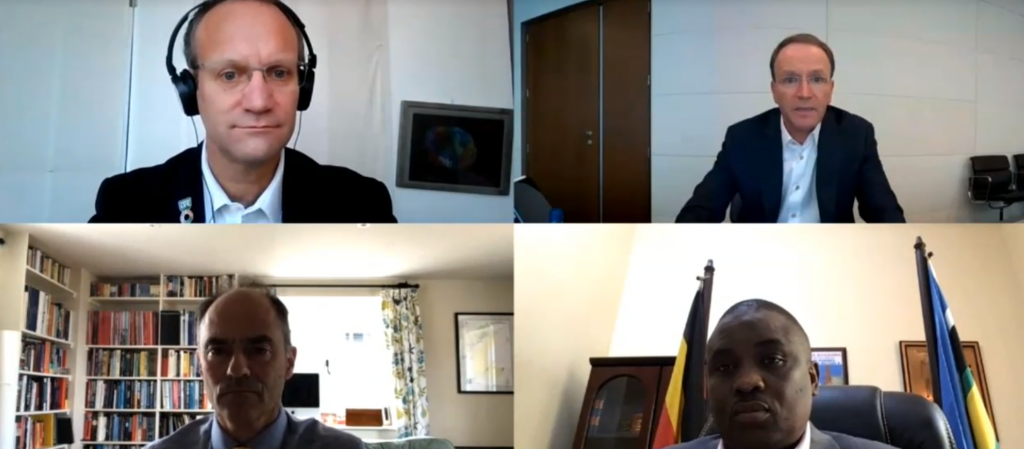15 December 2020 | President-elect Joe Biden has an unprecedented opportunity to walk the U.S.—and perhaps the world—back from the brink on climate change. After four years of harmful deregulation, his work is cut out for him.
But to truly address climate change will require more than simply repealing President Donald Trump’s rollbacks and maybe strengthening a few rules on power plant emissions before calling it a day. Because climate change is an everything problem, the entire and considerable weight of the federal government will need to be thrown into addressing it. Like rowing competition, the race to address climate change can only be won if everyone is pulling in the same direction.
This “all of government” response to the crisis at hand is the only way to ensure a shot at keeping the globe from heating up more than the 2 degrees Celsius (3.6 degrees Fahrenheit) goal outlined in the Paris Agreement, to say nothing of the 1.5 degrees Celsius (2.7 degrees Fahrenheit) target outlined in a landmark United Nations report. Over the next four years, Biden will have to center climate change at every agency, from the obvious ones like the Environmental Protection Agency to others like the Department of Education and Treasury.
Earther has pulled together ideas and actions federal agencies can take to address climate change, based on conversations with dozens of experts who know the federal government’s levers of power and how to pull them so that they’re all geared to lower emissions. The ideas below are not exhaustive nor do they include solutions that can be applied at all agencies such as installing climate advocates at all levels, using procurement to electrify the government vehicle fleet, and diversifying the workforce so that new problem solvers are welcomed into the fold. But they do represent some of the best ones out there for how to get the ship turned quickly.
But importantly, the visions aren’t merely technocratic. The climate crisis is the result of an unjust system of environmental destruction and racial inequality and violence. Sure, President-elect Biden could issue an executive order to close all coal plants but without fostering a just transition for workers or putting in place plans to remediate pollution in communities, we’ll end up with the same crappy world with slightly cleaner air. Fighting climate change requires tearing down systems of oppression and allowing communities to chart their own course in the clean energy. It requires healing the scars left by more than a century of extractive capitalism. It requires reparations for people and the land.
“We all fight for Mother Earth, and right now she is ill and we have to find a way to make her healthy in order for us to be healthy,” Ann Marie Chischilly, the executive director of Institute for Tribal Environmental Professionals at Northern Arizona University, said. “This is [about] our viewpoint for seven generations to come and making decisions at that level of thinking that far out. You have to really think holistically.”
Below is an agency-by-agency along with other facets of the executive branch breakdown of how to reimagine the federal government for the climate change action era. If you know Joe Biden, please share these ideas with him. (And if you are, in fact, Joe Biden, please read this over carefully. Also hey.)
Department of Agriculture
Agriculture is responsible for some 10% of U.S. greenhouse gas emissions, making it a major contributor to the climate crisis. At the same time, farm and ranch workers have been experiencing losses due to climate-fueled disasters like California’s wildfires and the recent derecho in Iowa. A climate-focused USDA could tackle both sides of the coin.
The USDA presides over farming and forestry, both of which could be important avenues for greenhouse gas sequestration. In his Plan for Rural America, Biden promised to help farmers make money by planting crops that pull carbon out of the air. John Ikerd, a professor emeritus of agricultural and applied economics at the University of Missouri’s College of Agriculture, Food and Natural Resources, said this is a good idea, but must be enacted carefully.
“If you want just to maximize carbon sequestration, you’re probably going to be using heavy applications of fertilizers and pesticides that would end up leaching into groundwater,” he said. “You could have nitrate problems which could be a major problem in drinking water. So you might deal with a carbon problem to some extent, but you might make the pollution problem worse.”
This pollution could leave the U.S. with degraded soils, which could lead to poor plant growth and thereby reduce sequestration capabilities. Instead of tackling each issue alone, Ickert proposes a more holistic approach. In a 2020 report for Data for Progress, he and a half dozen others laid out a plan to financially incentivize carbon sequestration, but with many additional stipulations to protect the planet and workers.
“That would include reduced tillage, reduced use of pesticides, diverse rotations—no more monoculture,” Mackenzie Feldman, a food and sustainability fellow, Data For Progress and the report’s lead author, said.
This would also help farmers to get out of debt. Farm debt is now at a level last seen in 1980, which marked the dawn of a historic crisis in the industry.
The Forest Service, which falls in the USDA’s domain, could also be an important source of climate action. The agency oversees 193 million acres of land, equivalent to the state of Texas. Trump proposed a dumb program to plant a trillion trees, but more helpful would be expanding the department’s powers to protect existing forests from insects, diseases, and invasive species. Biden could also pour more resources into the agency’s important climate adaptation efforts to boost resilience to forest fires and help build food security, and climate science efforts, too.
Equally important is the department’s ability to boost equity. Black farmers received just 0.80% of the USDA’s loans between 2009 and 2016, and the problem goes back much farther than that.
“In 1910, one in seven farmers were African American, and over the next century, 98% of black farmers were dispossessed,” Feldman said.
Boosting these small farms could also be a climate solution, since small farmers are by-and-large more environmentally friendly than their huge, industrialized counterparts.
“The main thing is that the USDA should take on all these problems, and recognize that they’re all interrelated,” Ickert said.
Department of Commerce
At the root, DOC is largely the Department of Data and Information. And among its most prized data sources is the National Oceanic and Atmospheric Administration. It has what NOAA stans affectionately refer to as a “wet” side and “dry” side, denoting its focus on sea and land (tbd on where the atmosphere fits). That trove of data can help the U.S. prepare for the coming climate crisis and ensure DOC lives up to its mission to “create the conditions for economic growth and opportunity.”
Under Trump, NOAA has been overrun with climate deniers and skeptics. Getting them out of NOAA is step one for the Biden administration. The Climate 21 Project, a group of experts who released a series of memos on climate and governance, suggested the Biden’s NOAA create a Climate Council to coordinate efforts across the wet and dry sides. In addition to collecting data, NOAA issues life-saving forecasts (the National Weather Service), helps manage waterways (National Ocean Service), and conducts science research from the deep sea to space. Ensuring all those moving parts address climate change is a tall task, but crucial to make sure the agency is pulling in the same direction. The best thing about a Climate Council as opposed to, say, forming a new division within NOAA, is it could be implemented without Congressional approval.
“They could do it right away and that would be a way for them to immediately encourage that collaboration across line offices,” Jean Flemma, director of the Ocean Defense Initiative and a Climate 21 author, said.
Because NOAA’s mission is to help keep the economy churning, the agency could also revisit its science priorities to focus on near-term climate change and forecasts. A community looking to build a boat launch, for example, may want climate projections for the next decade, not the next century. To do that type of work requires scientists and more computing power.
“The weather could be predicted really well 10 days out, and the climate can be predicted really well on the order of 50 years out,” Miriam Goldstein, an ocean policy expert at the Center for American Progress and report author, said. “But we don’t have a lot in the five to 10 year timescale.”
NOAA also does tons of work on the ground, including a program called Sea Grant that partners with local universities. Climate could again take center stage there and new projections like the ones Goldstein suggested could be disseminated through the program offices to help communities plan and restore coastal ecosystems. The latter is particularly important due to sea level rise and the protection restoration can afford as well as the fact that certain ecosystems, such as mangroves, can store carbon.
So yes, it’s about data. But it’s also about ensuring that data ends up in the hands of decision makers or is used to directly ensure people are protected. Oh, and also for the love of all things holy, no more Sharpiegates.
Department of Defense
The DOD is at once a big driver of climate change and affected by it. The Pentagon is the largest consumer of fossil fuels in the federal government, using more than the entire countries of Sweden and Denmark. It’s also the largest institutional greenhouse gas polluter in the world.
Under Biden, there are limitless possibilities to clean up the military’s carbon footprint while also insulating its bases from climate change and improving national security. For instance, as the policy organization Climate and Security Advisory Group has suggested, the administration could charge its security advisors with making plans for climate security in the world’s most vulnerable regions domestically and abroad, helping those areas to handle climate stressors and deploy clean energy to preserve safety. It’s important that this is not simply used to promote American-made clean power, but that it promotes the use of the best-available technology.
The Pentagon could also continue to research which of its bases are most vulnerable to the impacts of the changing climate like wildfires and droughts, and ensure they are ready to weather those disasters. It also has a chance to remediate land it has poisoned. Among hundreds of examples are Vieques, Puerto Rico where decades of Navy chemical pollution have hugely increased locals’ risk of cardiovascular and respiratory disease, and working to investigate and eliminate the horrific impacts of the depleted uranium that troops used in Iraq.
When resources are set aside to carry out these projects, the administration should also ensure that those projects are seen through. This summer, the Pentagon received $1 billion from the nation’s covid-19 stimulus bill to “prevent, prepare for, and respond to coronavirus,” but it diverted the majority of those funds to defense contractors to produce military items such as parts for jet engines and armor. If funds are obtained for green projects, the administration should ensure that that’s how they’re used.
That doesn’t address the underlying issue of its use in destabilizing entire countries and regions. So while its role is purportedly meant to keep Americans safe, in practice, DOD perpetuates endless wars and contributes to the existential threat of climate change through its copious fossil fuel use, both of which put people at risk. Cutting the Pentagon budget could save countless lives by limiting both. But this doesn’t mean the government should spend less overall. Biden could reappropriate the funds for programs that reduce emissions and meaningfully make the world safer.
“Pentagon funding doesn’t keep people on the Gulf Coast safe from hurricanes, or people in California safe from wildfires,” Basav Sen, climate justice project director at the Institute for Policy Studies. “But investing in renewable energy, public transportation, energy efficient buildings, and ecological agriculture does help keep people safe. So if the goal really is to protect people from actual danger, we should be funding climate protection, not the Pentagon.”
An Institute for Policy Studies brief recommends starting by slashing $350 billion from the Pentagon budget, which is a little under half. That would still leave the U.S. with the largest military budget in the world. In addition, the brief includes a call to close hundreds of bases outside U.S. borders, many of which have leached dangerous pollutants into air and drinking water.
With the budget the department has left, the new administration should ensure that no wars are being waged to protect fossil fuel access. Since 1973, between one quarter and one half of all U.S. wars have been waged at least in part for oil. Instead, armed forces should be deployed to clean up the dirty legacy of war.
Department of Education
Though its name is education, the role of the department in setting the education agenda is fairly limited. It can offer awards to educators for bringing climate into their classroom, providing workshops or conferences for teachers focused on climate, and expand programs like Green Ribbon Schools, which it awards to schools and districts for sustainable operations. It could also help collect and ensure access to resources for K-12 teachers about climate change from agencies like NASA and the U.S. Geological Survey, resources the Trump administration tried to memory-hole.
But ultimately, states set their own educational standards. So a Biden DOE isn’t going to be mandating climate in the curriculum anytime soon. Glenn Branch, the deputy director of the National Center for Science Education, said that perhaps the agency’s biggest role can be having a secretary who is vocal about climate change’s rightful role in the classroom, giving teachers the courage to approach it. At the end of the day, the position is a bullhorn to schools and educators across all levels. Having a secretary using it to shout a climate message might be the best tool in the department’s toolbox.
Department of Energy
The DOE oversees U.S. electricity use, which is responsible for 26.9 percent of the nation’s total carbon emissions. When it comes to the future of the climate, the agency has one of the most important roles in the executive branch.
A key responsibility of the DOE is setting efficiency standards for appliances. Under the Trump administration, the agency failed to update dozens of these regulations when they were overdue, and even eased requirements for some appliances. This meant the U.S. emitted tens of millions more tons of carbon than it would have under stricter rules.
The next administration could undo that damage and go even further to cut greenhouse gas pollution. If it chooses to, a recent report from the American Council for an Energy Efficient Economy shows Biden’s DOE could cut the nation’s carbon emissions by up to 2.9 billion metric tons through 2030—the equivalent to the pollution from 25 coal-fired power plants—by making stricter standards for 47 different products, including water heaters, clothes dryers, and refrigerators. These would also allow Americans to save on their energy bills as well.
While these standards can make a huge difference for carbon pollution, DOE doesn’t have the power to take on greenhouse gas emissions in their standards directly. It couldn’t, for instance, mandate a cap on the greenhouse gas emissions generated by a dishwasher.
“That’s an authority that would have to be codified in law, and that would require Congress,” Jake Higdon, a senior analyst at the Environmental Defense Fund and fellow at Data for Progress, said. It can, however, encourage manufacturers and customers to go beyond its standards to reduce energy use (and, indirectly, emissions) with its voluntary certification programs, like EnergyStar. It can also ensure that grants and loan programs are going to deployment of low and zero emissions technologies, like the top performers in those programs.
Those grant and loan programs could also be used to prioritize energy justice. For instance, the agency could make an effort to fund community-owned solar projects or renewable-powered microgrids, which are resilient to power outages in the electricity grid.
“Those are initiatives that can help promote equitable access to energy,” Higdon said. “And it could focus on grantmaking in frontline communities…making sure these technologies are going to the communities that have historically borne the brunt of pollution.”
The same goes for the agency’s clean electricity deployment programs, which exist but are very limited in their scope and funding. “Right now, there’s the Weatherization Assistance Program and the State Energy Program,” Higdon said. With Congressional approval, both could be expanded and better resourced to ensure more Americans have access to carbon-free power.
The DOE is also responsible for important research operations, and by hiring climate-focused staff, it could use those programs to further research into clean energy. That includes not only things like better wind and solar energy, but also technologies that have received less focus.
“The DOE hasn’t done as much work outside of the power sector, but efficiency standards can be really useful for reducing pollution and saving energy costs in, say, manufacturing and commercial building sectors,” Higdon said. “There, energy use costs a lot of money and it generates a big portion of those industries’ emissions. Appliances like big industrial boilers and HVAC systems for commercial buildings are really large, and they last a really long time, and right now they’re super expensive and polluting.”
The next generation of these technologies could be cheaper and less polluting, as well as kinder to the climate.
Department of Health and Human Services
The climate crisis and environmental degradation are top risks to human health. Amid unchecked global warming, an August study found that heat waves could kill as many people as all infectious diseases combined. Floods create public health emergencies, too, from sewage overflows to chemical leaks. To act on these threats, the first thing the HHS should do is call out the problem.
“The next HHS Secretary should declare climate change a public health emergency on Day 1 of the Biden Administration,” Ezra Silk, co-founder of The Climate Mobilization, said. “This declaration will empower the department to tap the Public Health Emergency Fund and launch a national public education campaign about the acute health risks of climate change.”
That campaign, Silk said, should also teach Americans about the less obvious public health dangers of environmental degradation, such as the ways it can bring forth pandemics. Covid-19, for instance, is a zoonotic disease, meaning it was transmitted to people from animals. Deforestation, factory farming, and other forms of animal exploitation put us at risk for more public health crises of this kind.
Beyond education, the HHS could allocate resources specifically for climate resilience. Renee Salas, a Harvard Medical School clinical instructor focused on the intersection of climate and health, said it could do so by creating a separate subagency.
“This office could work to advance national surveillance for climate-related health risks, bolster resiliency in our healthcare infrastructure and supply chains, among other things,” she said.
Department of Homeland Security
While the Trump administration’s environmental rollbacks have focused around EPA and DOI, the administration’s sheer malevolence has been front and center at DHS. Border Patrol and Immigration and Customs Enforcement are housed under DHS and have committed a slew of human rights and environmental abuses. The department is also home to the Federal Emergency Management Agency, which also dealt with fraud and morale issues over the past four years (though the latter predates Trump).
The Biden administration will have so much work to do to fix an agency Frankensteined together in the wake of the September 11 terrorist attacks, let alone make it an agency to address climate change. But because of the scope of its work, DHS could be radically overhauled in ways that would protect the U.S. and those seeking refuge here in an increasingly upended world.
One of the first places to physically start the work is on the U.S.-Mexico border. There, the Trump administration has steamrolled environmental regulations to build its border wall. DHS should halt all construction, and at the bare minimum work with public lands agencies to do a real environmental impact assessment in line with bedrock laws on the damage already done. But the reality is it should go much further. The wall is a racist abomination that’s also cut through fragile desert landscapes, putting more stress on creatures that live there. As the climate crisis worsens, the borderlands need to be open to give those species a shot at survival.
“We’ll have to do what most American politicians haven’t done or American bureaucrats even and that’s view the borderlands and as an interconnected, interdependent bioregion and manage these incredible resources with that in mind,” Laiken Jordahl, a borderlands campaigner with the Center for Biological Diversity, said. “My dream is to help establish an international peace park at Organ Pipe with El Pinacate across the border in Mexico.”
Then there’s the human side of DHS. Climate change-fueled droughts in Syria and Central America have already led to mass migrations, and a growing body of research shows how it could exacerbate conflict and lead to more asylum seekers. Despite this, climate migrants lack protections. The Biden administration could accommodate those forced from their homes by the climate crisis through a number of channels, including temporary protected status. That designation was used to allow migrants from El Salvador, Haiti, and elsewhere to resettle in the U.S. following disasters such as earthquakes or political unrest. Using it to help climate migrants is a fix Biden’s DHS could use to humanely help those in need after hurricanes, drought, fires, or other disasters supercharged by climate change. A Center for Strategic and International Studies brief also includes a roadmap on how DHS could create a resettlement program specific for climate refugees.
Then there’s FEMA. The agency is key for responding to increasing frequent and damaging weather as well as preparing the nation for them. Samantha Montano, an emergency management researcher at Massachusetts Maritime Academy, said the agency needs to do is open up the hood and see where things stand after four years of Trump. But next comes getting a leader who gets the link between climate, disasters, and recovery, and isn’t afraid to set the agenda, something that just hasn’t happened to-date there.
“The number one most important thing is choosing somebody who leads FEMA who not only understands climate change, but is really vocal and up front,” Montano added.
While there’s no shortage of things a new administrator could do from overhauling the National Flood Insurance Program to ensuring rebuilding after disasters reflects Biden’s “build back better” principle rather than, as it currently does, build what was there before. But one of the biggest things FEMA could do is both model how to fit climate projections into disaster planning at the federal level for state and local agencies and use funding to compel those agencies to follow suit.
“If FEMA attaches having a climate adaption plan to your state getting FEMA funding for your next disaster, they’re going to do it,” Montano said. “You need somebody who is a visionary who understands what emergency management could be [to] motivate people not only at FEMA but the profession as a whole.”
Department of Housing and Urban Development
We urgently need to decarbonize the U.S. buildings sector, which consumes 39% of the nation’s energy. More than half of that is tied to residential buildings. At the same time, the climate crisis is making it all the more urgent to ensure all people have access to homes that protect them from increased heat, cold, rain, and other forms of extreme weather. HUD could help get us there.
Low-income housing needs particular attention. Right now, nearly half a million government-subsidized households are located in flood plains, and when floods destroy buildings, affordable units are less likely to get rebuilt. Poorer people are also far more likely to reside in areas that are heat islands—places where concrete and tall buildings create higher temperatures—and in poorly insulated homes, which is an issue in the extreme cold, too. This means these homes rely more on heating and cooling technology to maintain comfort, too, which results in higher energy bills and creates more indoor pollution from air conditioners, which can screw up air quality and also warm the climate. HUD could begin to take all of this on by changing its core housing mandates, which dictate standards for residences.
“Homes that do not protect seniors from the adverse health impacts of high-heat events, that do not ensure high indoor environmental quality (thermal comfort, air quality, pests, etc.), or that don’t enable residents to shelter safely in their homes during extreme weather can no longer be called ‘quality homes,’” Bomee Jung, former vice president of energy and sustainability at New York City’s Housing Authority, wrote in a memo calling for a HUD chief climate officer. From there, the agency could implement new climate-focused standards across all of its projects.
For instance, the Department of Energy has a buildings certification for Zero-Energy Ready Homes, which applies to buildings that are “so energy efficient, that a renewable energy system can offset all or most of its annual energy consumption.” That label is the most aggressive emissions targeting program in existence, but the federal government is now working on an even stronger certification for Zero-Carbon Ready Homes. Those will apply to buildings that have the lowest possible greenhouse gas impact and have offsets in place for any necessary emissions, such as electricity or gas use in areas that don’t have an available renewable-powered grid. They’ll also be ready to be transitioned to all renewable energy when the technology is put into place.
“One of the things that [HUD] has to do is to say, ‘we’re just going to take the most aggressive labeling program for residential homes, and we’re going to mandate for all of our new construction projects,’” Jung, speaking on her own behalf, said. “And we have a very well established base of technical capacity, pretty much throughout the country. We’re ready to build homes [sustainably] right now.”
Mandating that federal contractors meet these aggressive targets also encourages private companies to work toward meeting them, so that they can be eligible to work with HUD. It also allows them flexibility to work within their states’ climate targets, since some states are decarbonizing their grids faster than others.
The department also oversees multi-billion dollar grantmaking and financing programs, which could also be used to push forth sustainable building.
“Even without new funding from Congress, HUD has the potential to drive major new investments in climate justice in nearly every community in the U.S,” Billy Fleming, the director of the University of Pennsylvania’s McHarg Center, said. “Its various grant and finance programs—especially those in the Office of Community Planning and Development—could come with new strings that guarantee a larger proportion of its $32 billion budget goes toward building low-carbon working-class and public housing communities.”
That could include the agency’s Community Development Block Grant (CDBG) Program, which provides grants each year for states and municipalities to develop residential areas. Fleming said that HUD could require that all recipients of CDBG funding develop policies to reduce greenhouse gases and air pollution from the buildings sector and incorporate plans to adapt to extreme heat, sea level rise, and other threats.
To ensure that the department meets all of these goals, Jung said it should hire a climate officer to work in the secretary’s office. That person could liaise with other agencies to ensure it is prepared for coming climate policies, such as efficiency standards for appliances from the Department of Energy. Jung said HUD should also employ regional climate experts who are versed in local climate policies and are focused on ensuring housing in all parts of the country are meeting ambitious goals.
“There needs to be people whose entire job it is to think about climate all day,” she said.
Department of Justice
Judicial action can be a major arena to push forth climate action, as the DOJ has the power to bring its hammer down on polluting companies and entities. In recent years, lawyers have worked with activists and municipalities to file a growing number of lawsuits against oil companies and their allies in government for their contributions to the climate crisis. If they prevail, these cases could force these fossil fuel giants to change their behavior and pay retributions for the environmental and public health damages they’ve caused.
Reports have found that under Trump, the DOJ has worked with the polluting parties to fight off these cases, preparing amicus briefs in their favor. But Biden has pledged to order his DOJ to “strategically support ongoing plaintiff-driven climate litigation against polluters.” The agency couldn’t force courts to rule in favor of the plaintiffs of these cases, but its support could seriously tip the scales in their favor.
“If the DOJ were siding with people over polluters moving forward, I think it would be an entirely different ballgame,” Richard Wiles, executive director of Climate Integrity, said.
The first step would be for new DOJ officials to stop helping oil companies fend off lawsuits. But the agency could also go further, filing amicus briefs for the plaintiffs instead. The advisory task force Biden formed with Sen. Bernie Sanders has suggested the president-elect form an environmental and climate justice division within the DOJ, and the president-elect’s climate plan includes a promise to do so. Whether or not this happens will depend in large part on who Biden chooses to work in the DOJ.
“One of the first and most important things Biden can do is appoint an Attorney General and other Department of Justice officials who are committed to holding the fossil fuel industry accountable for deceiving the public about their role in causing the climate crisis,” Wiles said.
If he appointed someone brave enough, Biden’s DOJ could not only support others’ lawsuits, but could do investigations of its own. That includes following the template laid out by attorneys general in Massachusetts, New York, and elsewhere to probe oil companies and executives that lied to the public about climate change. If the DOJ turned up foul play, the agency could levy those investigations to force bad actors to clean up their act. It’s not just fossil fuel companies who the DOJ could hold accountable for pollution, either.
“Biden’s DOJ could enhance enforcement efforts in the DOJ’s Environment and Natural Resources Division to increase enforcement under the Clean Air Act,” Jillian Blanchard, climate change director at Lawyers for Good Government, said in an email. Under the Trump administration’s so-called Clean Energy Rule, which gutted the U.S. Clean Power Plan, the agency’s ability to do this is limited, but the replacement rule is being challenged in court.
“The Biden Administration could ask for a stay of this litigation while it revokes Trump’s rule and re-issues an updated version of Obama’s Clean Power Plan,” Blanchard said. Then, the DOJ could revamp the Clean Power Plan and under it, ramp up efforts to enforce regulations and take polluters to court. That’s fallen to a 30-year low under Trump, and in his climate plan, Biden has said he will “direct his EPA and Justice Department to pursue these cases to the fullest extent permitted by law and, when needed, seek additional legislation as needed to hold corporate executives personally accountable—including jail time where merited.”
Department of Labor
Extreme heat and weather disasters pose safety risks to workers, especially those whose labor takes place outdoors. They also put workers under financial stress. A recent report, for instance, found that the U.S. lost a total of 2 billion potential hours of labor due to extreme heat last year, since high temperatures can make it dangerous to go outside.
“As the world warms, many occupations will become more hazardous and dangerous, and therefore will need the Department of Labor more than ever,” Joe Uehlein, founder of the Labor Network for Sustainability, said.
Labor rights are at the center of the transition away from fossil fuels. The covid-19 pandemic has made this clearer than ever, since oil companies, amid crashing fuel demand, have been cutting costs by laying off workers in droves while ensuring their shareholders’ pockets stay lined. Currently, the DOL has employment and training programs for dislocated workers, but if the agency were to have climate-focused staff on their team, it could build out entire programs specifically for those laid off from dirty energy industries. The agency could also create employment programs within those industries’ replacements.
“They could partner with employers from the clean industries of tomorrow for the transition away from our destructive economy, making sure that communities who are underrepresented in our workforce and especially in our fossil fuel economy, like people from frontline communities who have seen the worst impacts of it… get a fair chance to be to be trained for the jobs of tomorrow,” Basav Sen, climate justice project director at the Institute for Policy Studies, said.
It’s important that jobs in the clean energy economy are fairly paid and unionized to ensure that workers are protected. No worker should suffer worse conditions as a result of the transition to clean power. But unfortunately, the DOL’s options for improving workers’ rights to organize are limited without support from outside the agency. All of labor law needs an overhaul.
“The process by which unions are organized, according to U.S. labor law, is stacked in favor of employers. To promote workers rights in general, including those in fossil fuel industries, the process for organizing unions must be made easier and must not create many opportunities for employers to intervene and coerce and intimidate workers into not working in a union,” Sen said. Passing the PRO Act through the Senate would be a step in the right direction.
That said, even without Congressional backing, the agency could take steps to hold all employers accountable for violations of existing labor law. That includes wage and hour violations, wherein employers often try to shortchange on the number of hours actually worked. It also includes misclassification, where companies get out of giving workers benefits by saying they’re not employees—a violation upon which the entire business models of gig work companies is based.
“There will be a lot of people newly employed by the renewable sector,” Sen said. “Getting more aggressive about these kinds of violations would ensure that these jobs are good jobs.”
That would be a win for climate justice, and could also ease fossil fuel workers’ real concerns about the clean energy transition.
Department of State
The Trump administration has been a disaster for the U.S. image abroad. To rehabilitate it, Biden’s team will have a lot of work to do. And there may be no better avenue to doing so than the climate crisis, which doesn’t respect borders and will require cooperation on a global scale to solve. After decades of inaction, the urgency to get to work on reducing carbon pollution has never been higher.
“Climate is at the top of the international agenda,” Nat Keohane, a senior vice president at Environmental Defense Fund who co-authored a document for Climate 21 on the State Department, said. “You think about a Venn diagram of what’s important to our allies and what can be done right away, climate is at the center of that Venn diagram. The Iran nuclear deal is important, but you can’t act on it right away. [Rejoining] WHO is easy to act on, but the US membership in the WHO is not like the thing that’s keeping foreign leaders up at night.”
It starts on day one and re-entering the Paris Agreement, something Biden has pledged to do. But that’s akin to stretching for the marathon ahead. As part of rejoining, the Biden administration will have to submit a Nationally Determined Contribution (NDC), a non-binding commitment to reduce emissions and address climate change. The one submitted under Obama called for the U.S. to reduce emissions 26% to 28% below 2005 emissions by 2025. The U.S. was unlikely to meet that even before Trump pulled out of the agreement, but the urgency to address climate change has only grown.
Now, the world will eagerly wait to see what Biden puts forward and how much more ambitious it will be than the one Obama put forward. The timeline to do so will be tight with a major international climate conference coming up in November. Given that Biden has promised to decarbonize electricity by 2035. Keohane said a credible NDC would likely be around a promise to reduce all U.S. emissions 50% below 2005 levels by 2030.
The State Department can’t just rely on showing up to climate talks once a year, though. It has to incorporate a mix of multilateral and bilateral conversations and commitments around climate so the world is working together to achieve emissions reductions. That includes bringing together high emitters such as China, India, the EU, and oil-producing states in the Middle East and coming up with a mutually agreed upon framework to wind down fossil fuel production. Aid can also be used to foster no-carbon development and help countries adapt to climate change, whether it’s rising seas, more intense droughts, or wildfires.
Climate 21 also includes a recommendation for a climate envoy who could ensure the State Department efforts are coordinated both within the agency and other departments, an idea echoed by others who have worked for the agency but wished to remain anonymous. The U.S. has more to offer than just money; it has nearly unmatched expertise in government despite Trump’s attempt to hollow it out. The Department of Energy’s national labs, for example, are working on revolutionary clean energy technologies. The Department of Agriculture has knowledge for dryland farming. NASA has satellites that can monitor pollution. The State Department can leverage that expertise to negotiate deals, offering assistance to nations that don’t have the voluminous technical capacity of the U.S. And the foreign service can include more climate experts—an idea put forward by Evergreen Action in a memo—to make sure the baton is passed smoothly.
“All that can be harnessed, the State Department can build that out,” Keohane said. “I think of the State Department like the external face, and that they need to be developing these good relationships with the technical experts.”
Department of the Interior
A fifth of the U.S. is under the purview of DOI. That’s a lot of land to create a climate plan for. Oh, and there’s also 1.7 billion acres of ocean the agency oversees.
The DOI’s climate mission starts with what’s under the ground; 42% of coal, 24% of crude oil, and 13% of methane gas were extracted on public lands in 2017. The agency leases millions of acres to fossil fuel companies, and Trump tried to turbocharge that by opening vast swaths of the ocean and the far reaches of the Arctic National Wildlife Refuge to oil and gas exploitation. Biden has promised to ban offshore and Arctic drilling. He’ll have a tail wind on the latter as all major U.S. banks have said they’ll no longer fund Arctic fossil fuel exploration.
But work will have to go well beyond that, creating a plan to wind down fossil fuel activity on all federal land while simultaneously ramping up renewables, particularly offshore wind. Ending leasing will have a relatively small impact since there’s already so much coal, oil, and gas being dug up on public lands on current leases. To wind down production will require going further.
“It’s no longer enough to simply stop fossil fuel expansion—it’s now crucial that leaders committed to climate success begin actively winding down some existing extraction with a just transition,” Collin Rees, a campaigner with Oil Change U.S., said in a text. “Interior can do that in a number of ways without any new authority from Congress—by terminating fossil fuel leases which were issued invalidly, ending BLM’s practice of issuing lease suspensions, increasing and enforcing self-bonding requirements for oil and gas wells and coal mines, instituting health and safety buffer zones banning extraction in certain areas, reversing Trump’s attempts to shrink and repeal national monument designations, and more.”
There’s also the tall order of capping the estimated 750,000 orphaned wells, an unknown number of which are on public lands, spewing pollution. But that effort dovetails well with fossil fuel workers’ skills and could be a huge job creator while simultaneously helping wind down the industry without hurting workers.
Ramping up wind is already happening under Trump, with a record auction held in 2018. DOI could take money in this funding year’s Bureau of Ocean Energy Management budget and transfer it from offshore oil to offshore wind projects as a short-term move. Longer-term, it could speed up permitting for offshore wind and set targets for power generation.
Public lands also offer ample opportunities to capture and store carbon through natural sinks like forests and grasslands found in national parks, wildlife refuges, and other locations. At the same time, the agency has work to do along with the USDA to make sure the carbon stored on public lands doesn’t go up in smoke. Wildfires have burned over the West with increasing intensity and severity.
The agency also includes Fish and Wildlife Services, which oversees the Endangered Species Act. Trump’s DOI watered that down in a way that makes it harder to protect species threatened by climate change. Addressing the loopholes he created is vital to protecting wildlife. The department also needs to work with DHS to remediate the border wall, which was built in a manner destructive to national parks and endangered species that live in the fragile borderlands.
Climate justice is also a huge area where DOI can make inroads. Under Trump, the agency shrunk Bears Ears National Monument against the wishes of local tribes. It could reverse course under Biden. The Bureau of Indian Affairs also sits within the agency and is tasked with improving economic opportunities for tribes. It could fulfill that mission by bringing opportunities to be part of the clean energy economy to reservations around the U.S. The Navajo Nation, for example, just saw the Navajo Generating Station shutter. While that reduced pollution, it also left a $40 million hole in the budget. BIA could support developing the renewable energy sector given the transmission infrastructure already in place and support other tribes so they could be part of the transition. There’s also the matter of pipelines that faced widespread Indigenous opposition from Dakota Access to Keystone XL to Line 3, and the need to engage tribes more fully in the consultation process and receive consent (or listen to the opposition).
Uplifting tribes goes beyond the government swooping in, though. Rather it requires respecting Indigenous groups as peers, including treaty rights, and reconciling a history of displacement and genocide. Ann Marie Chischilly, the executive director of Northern Arizona University’s Institute for Tribal Environmental Professionals, pointed to a document that tribal climate experts put together earlier this year in support of the House’s climate plan as a good starting point for the Biden administration as well.
“Just the recognition and the respect would be huge—and listening to us,” she said.
Department of the Treasury
The Treasury advises the president on economic matters. Given that climate change is a massive threat to the economy, the Treasury has tons of untapped potential to influence climate policy—and specifically, to put an end to fossil fuel financing.
“Banks, asset managers, etc., they’re putting money continually into oil and gas,” Brett Fleishman, associate director of fossil finance campaigns at environmental advocacy organization 350.org, said. “Financial regulators have the ability to dig us out of this hole.”
That ability is due in large part to the 2010 Dodd-Frank Wall Street Reform and Consumer Protection Act, commonly known as Dodd Frank. The legislation was crafted after the 2008 financial crisis to give regulators more power to shield the economic system from crashes. Banks caused that crisis with predatory mortgages, but the climate crisis should qualify, too.
“The argument, overall, is that climate is a risk to the financial system and that the Treasury should do everything it can to help and push banks and companies to mitigate those risks that they themselves are undertaking,” Alexis Goldstein, senior policy analyst at Americans for Financial Reform, said.
Climate change is a threat to financial stability in more ways than one. It has the potential to disrupt every aspect of American life.
“There’s the physical planetary risk to the economy from things like when there is flooding or wildfires or drought somewhere, since those kinds of climate events threaten the financial assets that these companies hold,” Graham Steele, director of the Corporations and Society Initiative at Stanford University’s Graduate School of Business, said. “And then there’s public policy risk, because when policymakers decide they’re not going to rely so much on fossil fuels in the economy anymore, then loans to oil and gas companies and assets and investments in them will suddenly become less profitable.”
Dodd Frank created the Financial Stability Oversight Council (FSOC), a group chaired by the Department of Treasury’s secretary which includes all federal regulatory agencies. When the body identifies a risk, it can push regulators to more aggressively regulate the companies’ behavior.
“For instance, if FSOC says that because of their investments in fossil fuels and other carbon intensive industries, the country’s largest asset managers pose a risk to financial stability, it can tell the [Securities and Exchange Commission, which regulates asset managers] to limit those investments,” Steele said.
If that approach doesn’t work, FSOC can then bring the Federal Reserve into the picture.
“In that scenario, if the SEC says they disagree and they decide not to regulate asset managers more, then under the leadership of the Treasury, FSOC can vote to take authority for regulating those asset managers away from the SEC and give it to the Federal Reserve. They can then say to the Fed, okay, now you have to do the stuff that we were telling the SEC to do,” Steele said.
There’s an even more aggressive path that the Treasury could take. At the end of Dodd Frank, a provision gives FSOC the ability to take any other actions it deems necessary to address the risks that companies pose. That could be interpreted to allow the body to create dollar caps on the investments that companies can make in polluting industries in order to limit global warming or measure and limit the amount of emissions companies are responsible for. It could even be used to ban investments in fossil fuels, if regulators are bold enough.
The Treasury also plays a key role in international diplomacy and should prioritize mitigating climate risk there, too. When negotiating with the International Monetary Fund and World Bank, for instance, its officials should advocate for and participate in measures to draw down emissions. It can also increase the ambition of the country’s financial commitments to fighting climate change.
“At the upcoming UN COP [international climate talks] in Glasgow next year, the world will be looking to see how the U.S. rejoins the global community in tackling the climate crisis, and one of the key contributions it can make is by tackling one of the major sources of climate destruction in our country: Wall Street,” Ben Cushing, senior campaign representative at the Sierra Club, said. If the Treasury takes steps to reign in polluting institutions, it will show the world that the U.S. is serious about taking on the crisis, and could encourage other countries to do business—and follow suit.
Department of Transportation
The single biggest source of greenhouse gas emissions in the U.S. is transportation. So while agencies like EPA or the Department of Energy might get the brightest spotlights for how they can drive emissions cuts, DOT is central to the U.S. achieving zero emissions.
DOT and EPA actually have a role to play together in addressing vehicle emissions standards, something the Trump administration rolled back to allow for more pollution. Under Biden, they could change course and implement more stringent standards. Ultimately, an efficient internal combustion engine is still a source of pollution, though, and long-term, the DOT has to help transition to electric vehicles to really make a dent in transportation pollution.
It could do so by investing in charging infrastructure to stimulate electric vehicle demand. States and even utilities are already looking at plans to build out charging infrastructure on both coasts, efforts DOT could help foster. The department could also offer a voucher program for trading in a gas-powered vehicle for an electric one, something Senate Minority Leader Chuck Schumer has proposed.
The agency also funds a miles and miles of roadway maintenance and construction. That’s where things get sticky. On the one hand, it makes sense for the agency to spend money on repairs and ensuring they’re done to handle this century’s climate extremes of more heavy downpours, intense heat, and sea level rise, to name a few impacts. But its funding for new roads and roadway expansion is where things can go sideways. Building new roads is a carbon pollution time bomb waiting to happen as long as the majority of vehicles are gas-powered, to say nothing of the ecological impacts and how they can negatively affect communities they cut through.
“Right now, DOT is largely a car and truck agency,” Costa Samaras, the director of the Center for Engineering and Resilience for Climate Adaptation at Carnegie Mellon, said in an email. “We need it to be a clean mobility agency, and it can be. We need to revise the way DOT’s capital spending is given to states, the so-called 80-20 rule, where 80% is spent on highways and 20% is spent on transit.”
Expanding access to high-quality public transportation is where DOT could make major inroads to cutting carbon emissions. It’s also where money is urgently needed; just this week, the Washington Metropolitan Area Transit Authority announced plans to severely curtail service after covid-19 sent ridership and revenue plummeting. It’s a trend seen across the country, and the DOT could help fill some of that gap while also contributing to a low carbon future for cities.
That might be less sexy than shovel-ready projects like highway expansion where the Biden administration can toss up a big sign saying it’s being built with coronavirus recovery funds. Emily Grubert, an engineer at Georgia Tech, said that “basically just continues to put money into a system that is really, really hard to move away from when you’re so invested in just this massive capital allocation to the roadway system.”
She also advocated for letting cities and towns tinker and find what low- and no-carbon transit works best for them, whether its light rail, bike lanes, e-bike and scooter programs, or better walking infrastructure. The agency could also connect with HUD to figure out how transit and increasing housing density can work hand-in-hand to reduce emissions and improve quality of life.
Any projects that DOT does fund to reduce emissions also need to address injustice. Highways and other transportation infrastructure have generally been rammed through communities of color that not only fail to reap the benefits, but are actively harmed by air and noise pollution. All that asphalt also causes heat to build up, further worsens quality of life and puts people at-risk of heat-related illnesses. That can’t happen again. Similarly, Grubert said the shift to electric vehicles can’t create new injustices by forcing people working at gas stations to lose their jobs without a fallback or transition period.
“We can’t repeat the injustices of the past when we reinvest in infrastructure,” Samaras said.
Department of Veteran Affairs
The VA doesn’t have nearly as long a climate to-do list as other agencies, but it isn’t exempt either. The biggest issue is improving its hospitals and other infrastructure’s resilience to climate change. That’s particularly pressing given the impact of increasingly extreme weather and the risks that poses to any of the 20 million patients that rely on the VA. Sen. Elizabeth Warren and Sen. Brian Schatz, both on the Senate Armed Services Committee, made a request last year for the agency to update its adaptation plans.
The agency’s hospitals could also find ways to cut down on emissions as well. Common inhaled general anesthetics, for instance, also release greenhouse gases that are thousands of times more powerful than carbon dioxide. Cutting down on them and switching to local anesthesia could yield substantial climate benefits from an unexpected source of emissions.
Environmental Protection Agency
Not to diminish the other agencies here, but the EPA is the beating heart of climate policy. Thirty-nine EPA rules have been or are in the process of being rolled back. Another seven were rolled back, only to be reinstated after legal challenges. We’re talking everything from power plants to waterways to cars to pipelines to toilets.
It goes without saying Biden will likely try to reverse a number of the rollbacks and strengthen rules and regulations. As we’ve seen with the Trump years, a tide of lawsuits will likely come in in response, though from conservative challengers. That behooves the Biden administration to lean into actually applying science in rule-making, something that was decidedly lacking under Trump. Which, hey, that’ll happen when you first appoint a zealot grifter as agency administrator and then replace him after he resigns in shame with a coal lobbyist.
The most important rule the EPA can make is all of them, but one of most profound things it could work on in the Biden era is updating the social cost of carbon. That’s a metric the agency uses to determine the damage that would result from a ton of carbon dioxide pumped into the atmosphere, and it’s crucial to how stringent the EPA makes rules governing carbon pollution. The Trump administration put the social cost of a ton of carbon from $1 to $7, which is climate denial at its finest. Obama’s EPA put it at $45. Scientists put it much higher, including a July 2020 Nature Climate Change study that put it between $100 and $200 per ton. Long story short: The EPA has a lot of work to do on defining it properly, and getting it right will be a huge determinant for how it sets climate rules.
Speaking of, that also means rebuilding morale for career staff who spent the past four years either under siege or sidelined. Doing so could be as simple as signaling trust in their judgment and putting them to work on projects that will meaningfully reduce pollution and help public health. Cleaning house in the industry-stocked advisory boards put in place under the Trump administration could also reinvigorate agency staff. Among the greatest hits are a Trump era advisory board falsely calling air pollution and public health research “not trustworthy.” Undoing former Administrator Scott Pruitt’s rule to sideline real outside experts would be a huge boon.
For all the hackery done at the EPA over the Trump years, there’s one key lesson to takeaway for Biden. To quote Vox’s Dave Roberts: “blitz. Do everything at once.” Deliberate rule-making is no reason not to go fast and hard, especially given the scope of the climate crisis. It’s not about choosing whether to do car or power plant emissions rules first. There are any number of ways a Biden EPA can wield tools like the Clean Air Act, Clean Water Act, and other statutes to target emissions and pollution from all facets of industry. It must use them all at once.
EPA, along with the Departments of Interior, Energy, and Agriculture could also fire up a cross-agency version of Defense Advanced Research Projects Agency, known by its popular acronym, DARPA. The program aims at developing emerging technologies, including such hits as the internet. ARPA-E already exists at DOE for moonshot energy technology. A new ARPA, ARPA-C, could target all the non-energy ways to cut emissions. The Biden-Sanders Unity Task Force highlighted a few potential areas for breakthroughs in its final document, including decarbonizing industrial heat and construction, agriculture, and even improving agricultural practices to sequester carbon.
But the EPA cannot act without considering the impacts of rulemaking on those exposed to pollution. That means hooking up with states, tribes, fenceline, and even fossil fuel workers to hear about their experiences. It also means building up expertise in the agency’s Environmental Justice Office and actually enforcing fines for pollution, both which Trump weakened. Technocratic solutions to draw down emissions alone would address the climate part of the climate crisis, but not the crisis underlying it.
“There are a lot of more traditional pollutant issues that if EPA were more aggressive on, would provide a ton of remediation jobs that are in the places where a lot of people would be losing their work because they’re shutting down coal mines or shutting down power plants,” Emily Grubert, an engineer at Georgia Tech, said.
The Federal Reserve
The Federal Reserve is the country’s central banking system, and it has “not only the responsibility but the tools to turn climate action into reality,” Carla Skandier, co-manager of the climate and energy program of the Next System Project, said.
Under Dodd Frank, the Fed—like the Treasury—is meant to limit systemic risks to financial stability. Last month, the agency took steps to acknowledge that climate change is one of those threats. In its latest biannual report, officials listed the climate crisis as a stability risk for the first time, and also applied to join a group of central banks focused on meeting the goals of the Paris Agreement, an indication it’s preparing for Biden to reenter the agreement. But there are other, more concrete steps it could take to help the nation take on the crisis.
One of the Fed’s most powerful tools is its ability to create money. Through a policy known as quantitative easing, it can buy up government bonds and other financial assets to put more money into the economy and thereby boost economic activity. The agency launched the program amid the 2008 financial crash to pump money into the banks that caused the economic disaster in the first place. But it could use it now toward a better end—boosting the green economy.
“We believe the Fed could do this due to the powers it was given by Dodd Frank,” Mark Paul, who co-authored a report with Skandier on the proposal, said.
With its additional funds, the Federal Reserve could also invest on the order of $1 trillion dollars a year in renewable energy the nation needs. Doing so would also create jobs to build and maintain all that new infrastructure. The agency could also use these additional funds to buy up the nation’s fossil fuel companies, bringing them under national control in order to phase them out of existence. Skandier said that this moment, when oil prices and energy companies’ valuations are in the gutter, is the right time to do so. She noted that the government has already spent billions of dollars on bailing out fossil fuel companies using covid-19 stimulus money, but if it chose to, it could spend to help frontline communities, fossil fuel workers, and the planet instead.
“This is not only necessary from a social, labor, and environmental perspectives, but a must if the Fed wants to have a chance to fulfill its financial stability mandate moving forward,” she said.
Office of Management and Budget
OMB is the largest office under the president’s domain. It also may be the most underrated in terms of its importance for climate policy, because it sets the budget for every other part of the executive branch.
“If we could win on one agency besides the Department of Energy and the EPA, if we could have one more agency be led by a climate champion, you might want it to be OMB,” Max Moran, research assistant at the Center for Economic Policy Research’s Revolving Door Project, said.
While Congress controls the federal government’s purse, OMB can have massive influence over spending because it can insert itself into the process of determining what receives funding.
“George W. Bush’s OMB did this by essentially telling agencies that if they wanted to spend their discretionary funds on new business regulations, they had to first run it past OMB,” Moran said.
Biden could use the same power, but instead of doing so to bottleneck regulatory policy, he could force agencies to justify their funding requests in climate terms, ensuring each department is prioritizing reducing greenhouse gas emissions or at least not adding to carbon pollution. The agency could also institute an equity screen and ensuring that money is flowing to disadvantaged communities, a key priority identified in a new Evergreen Action brief. Biden has committed to targeting 40% of his clean energy plan funds to oft-neglected communities, and OMB offers a prime way to bake that into the entire federal government.
“If every other part of the executive branch has to go through a climate warrior in order to get their money, they are all going to start caring a lot more about climate issues,” Moran said.
NASA
Of all the climate-focused agencies under Trump, NASA arguably fared the best. After years of climate denial as a member of Congress, Jim Bridenstine staged a full turn around on the issue once he became NASA administrator. As a result, scientists have largely continued their climate work without interference.
Under Biden, NASA should redouble its climate efforts, though. Those include Earth-observing satellites, airborne missions, and climate modeling. Its satellites monitor everything from sea levels to pollution to gravity shifts due to melting ice (seriously, science is amazing). Continuing those observations and ensuring funding is available to keep data flowing is vital to ensuring a more granular understanding of what’s happening to the planet. That in turn can help feed NASA’s modeling program, which can in turn undergird decisions made across the government about how to respond to climate change.
Small Business Administration
Small businesses are on the frontlines of the climate crisis and covid-19. The Paycheck Protection Program was wildly popular as a way to keep businesses afloat during the pandemic. Nevertheless, small businesses are still hurting and will likely need more aid in the coming months.
While keeping people employed should be a top priority above all else, the SBA could propose and administer something along the lines of the PPP with the climate crisis in mind. One avenue could be a Sustainable Finance Fund, an idea put forth by Addisu Lashitew, a fellow at the Brooking Institute, that could help small businesses fund energy efficiency improvements or clean energy.
The Biden-Sanders Unity Task Force also includes a call for “expanding federal tools for investment in marginalized communities and broadening access to capital investment and markets for women- and minority-owned small businesses.” The SBA could play a central role in that through grants and loans, ensuring that communities traditionally neglected are at the forefront of the clean energy economy.
The task for Biden to be a climate president begins on Day 1, flows through every agency, Cabinet-level or otherwise, and will require dedication to ensure the solutions he and his appointees craft serve all Americans. If anything is clear by the end of this, it’s that the Biden administration has a tall task ahead. But it’s one where failure is quite literally not an option.

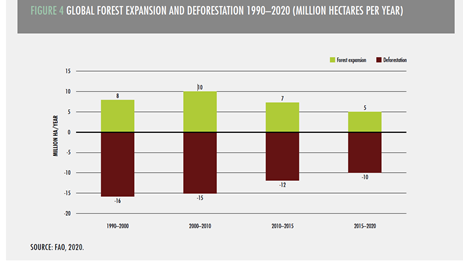
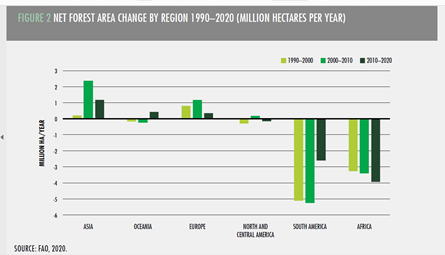

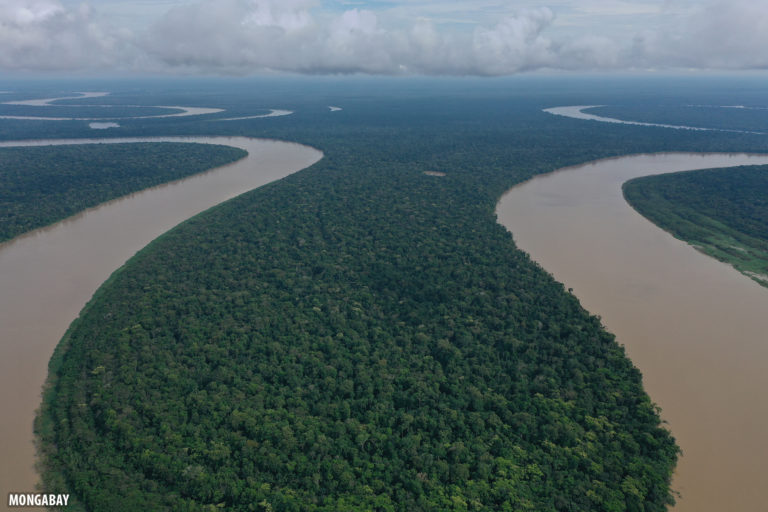


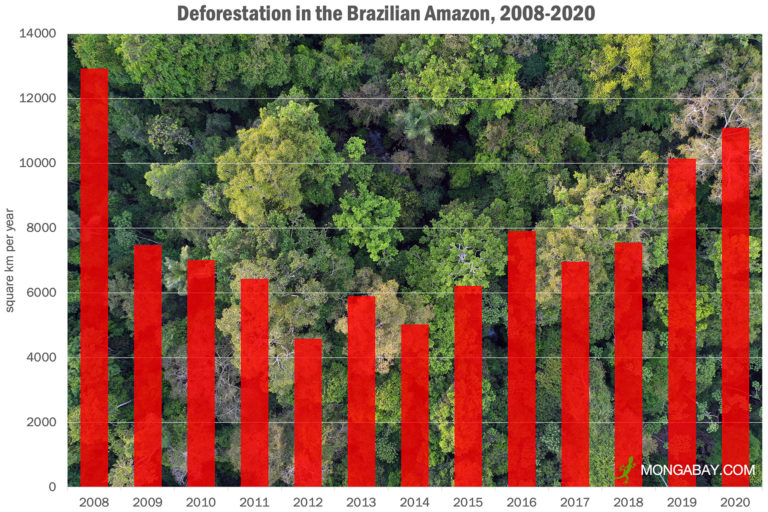




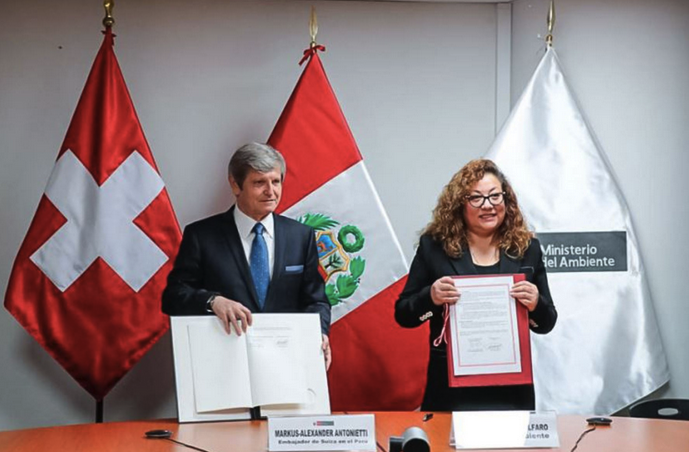
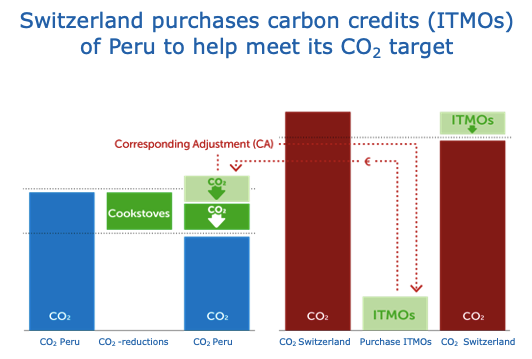
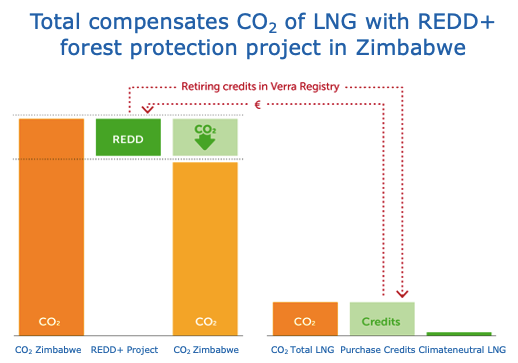
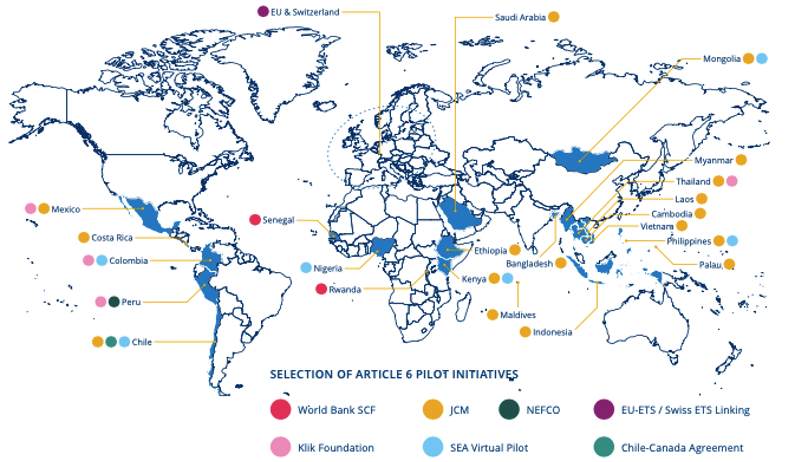
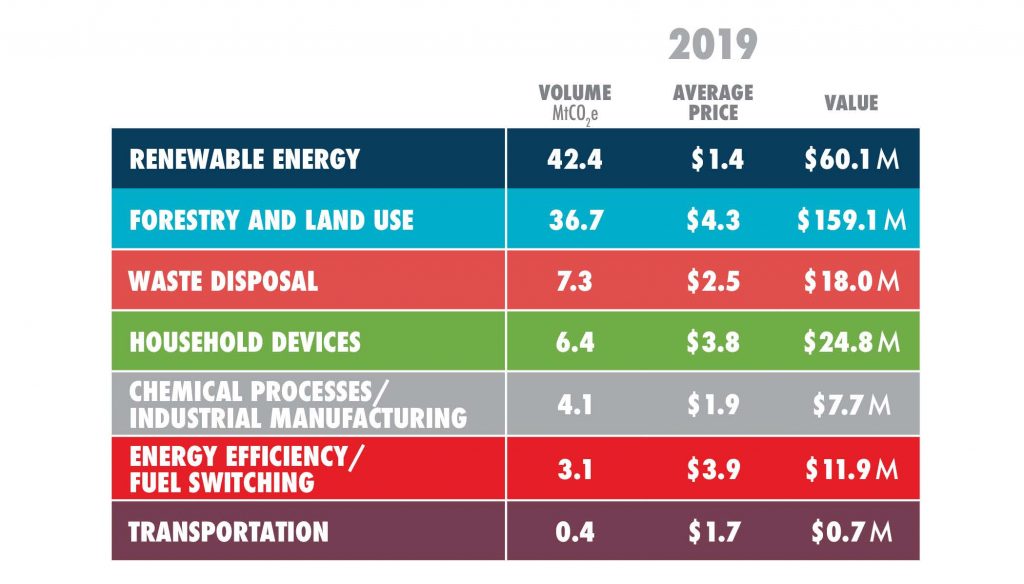





 A new book fills that knowledge gap:
A new book fills that knowledge gap: 
